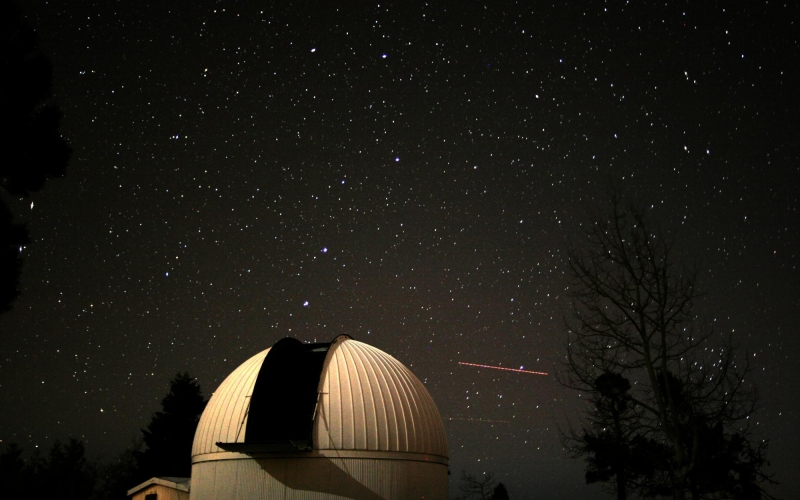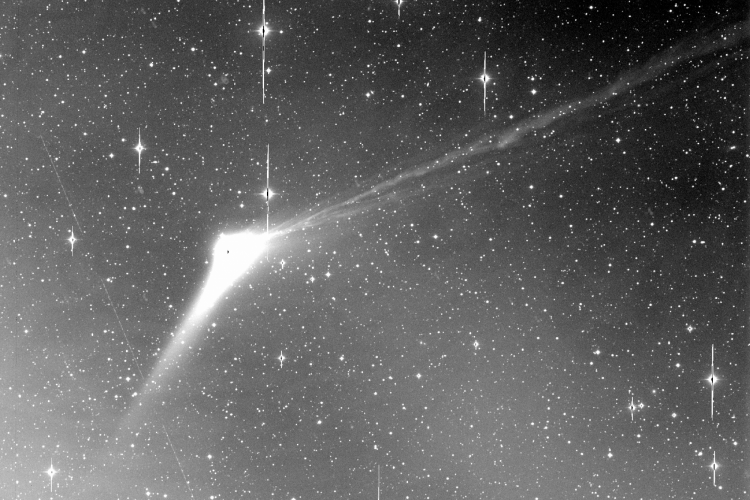It’s a classic science fiction storyline: An asteroid is on target to smash into Earth and send humans the way of the dinosaurs. It’s not total fantasy. In 1908, a meteoroid slammed into Russia near the Tunguska River in Siberia and destroyed an area the size of Manhattan. Most recently, an asteroid roughly the size of a six-story building broke up over Chelyabinsk, Russia in 2013 causing widespread damage and creating reverberations detected as far away as Antarctica.
These space objects are currently monitored by NASA’s Planetary Defense Coordination Office, which uses a series of telescopes to monitor the skies to locate moving objects, track them and identify any that might collide with our planet. Every night at locations such as the Catalina Sky Survey, located on Mount Lemmon in Tucson, Arizona, researchers pour over hundreds of images of star fields pulled from telescopes in search of fast-moving objects that might need to be flagged for further scrutiny.
A team from The Aerospace Corporation’s Artificial Intelligence Analytics and Innovation Department spent time observing scientists at the Catalina Sky Survey facility to see if artificial intelligence could help speed up the process. Aerospace AI engineers including Dr. Jon Neff, Dr. Nick Perlongo, Anatoli Zaremba, and Collin Erickson, used 100 terabytes of data provided by the Catalina Sky Survey team to build and train an artificial intelligence model to correctly identify moving objects from false positives. The result, called NEO AID (Near Earth Object Artificial Intelligence Detection), is now being tested at Catalina Sky Survey. Initial analysis appears to increase performance by ten percent and Aerospace engineers are confident that the end results could be even higher.

“What AI is good at is looking at a lot of data and making really fast analysis once it’s correctly trained,” explains Zigmond Leszczynski, Systems Director for The Aerospace Corporation’s Artificial Intelligence Analytics and Innovation Department. “If we can help humans sift through all that data and rapidly pick out of that star field what are the most important things, then we’re working with the humans and their system and giving them that boost.”
That boost comes through prioritization. NASA specialists currently rely on the human eye and expertise to make instant decisions about what images should be studied further. Leszczynski hopes AI can streamline that process. “NEO AID can identify something as high probability and alert a human to look at it, or it can flag an image as low probability and put that one on the bottom of the stack,” he says.
While NASA’s Planetary Defense Coordination Office has cataloged a high percentage of asteroids that could come near Earth, there are still rocks roughly 10 to 20 meters in diameter that zip between the Earth and moon once or twice a month.
“If something like [Tunguska] happened in today’s connected world and hit Beijing or hit New York or hit St. Petersburg or hit Berlin, you’re talking about a major impact —not just physically but to the geopolitical and economic fabric globally,” says Leszczynski. “It would be arguable that if people were not observing the skies and looking for these, something like this could be misinterpreted as an attack. Today, we try to look at these and share the information globally so that there is situational awareness and that type of misunderstanding doesn’t happen.”

Aerospace researchers are involved in every aspect of near Earth objects —from working with NASA’s Planetary Defense Group to run training exercises with FEMA should an impact happen to running scenarios on diverting a potential impact before it happens.
As Leszczynski explains, “They are working on capabilities where you could send out spacecraft gravity tractors that would catch up with these asteroids, orbit them and actually exert a gravitational influence to pull them off track so they don’t impact Earth. There is also the nuclear warhead example on which you can impart energy to move its course. You have spacecraft that could form up and attach and use thrust to push them off track.”
All of this begins with detection. That’s where NEO AID comes in.
“It’s going to be AI that teams with a human to get a job done,” says Leszczynski. “We feel we can get even better at this. This is the first shot across the bow.”








